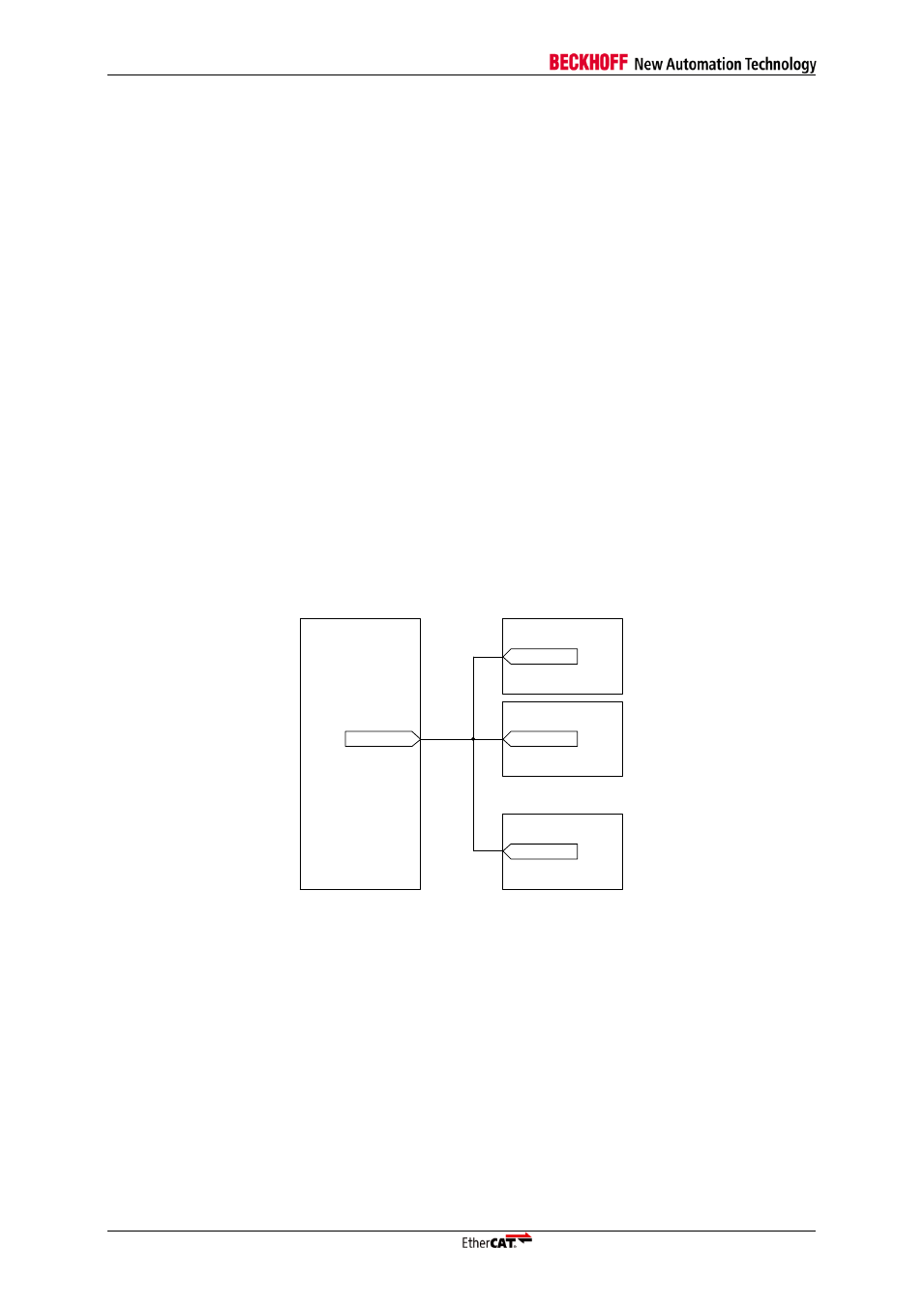7 what do i do with unused ports (ebus/mii), 8 resetting esc, phys, and µcontroller, What do i do with unused ports (ebus/mii) – BECKHOFF ET1100 User Manual
Page 8: Resetting esc, phys, and µcontroller

General Issues
4
Slave Controller
– Application Note FAQ
3.7
What do I do with unused ports (EBUS/MII)
EBUS
Attach RX resistor, leave TX signals open. If EBUS is not used at all, the tolerance of the RBIAS
resistor is incre
ased to 1kΩ (i.e., you could set RBIAS to 10 kΩ).
MII
Set LINK_MII to indicate no link (value depends on link polarity configuration), leave TX signals open,
pull-down RX signals (should not be left floating). Leave pull-up for MDC/MDIO in the design, so that
the interface can detect the state correctly..
3.8
Resetting ESC, PHYs, and µController
All Ethernet PHYs should be hold in reset state until the ESC leaves reset state. With the EtherCAT
ASICs, make use of the nRESET signal. With FPGAs, you should route the nRESET signal out of the
FPGA. Make sure the PHYs are in reset state while the FPGA is loading. If FX transceivers are used,
make also sure that the transceivers are disabled (powered down) while the ESC is not operational
(refer to the AN “PHY selection guide” for more details).
The reason is that otherwise the PHYs will establish a link with the neighbours, these neighbours will
open their link, but communication is not possible because the ESC is not operational. The result will
be frame loss, which is not desired.
If EEPROM emulation is used, the µController should be able to process EEPROM commands once
communication is possible, otherwise an EtherCAT master might time-out.
A µController attached to the PDI should also be reset by the ESC (e.g. by a soft reset via register
0x0040:0x0041).
Ethernet PHY
nRESET
nRESET
ESC
Ethernet PHY
nRESET
µController
nRESET
Figure 1: Reset connection principle
Refer to the ESC datasheet and the AN PHY selection guide for more information.
